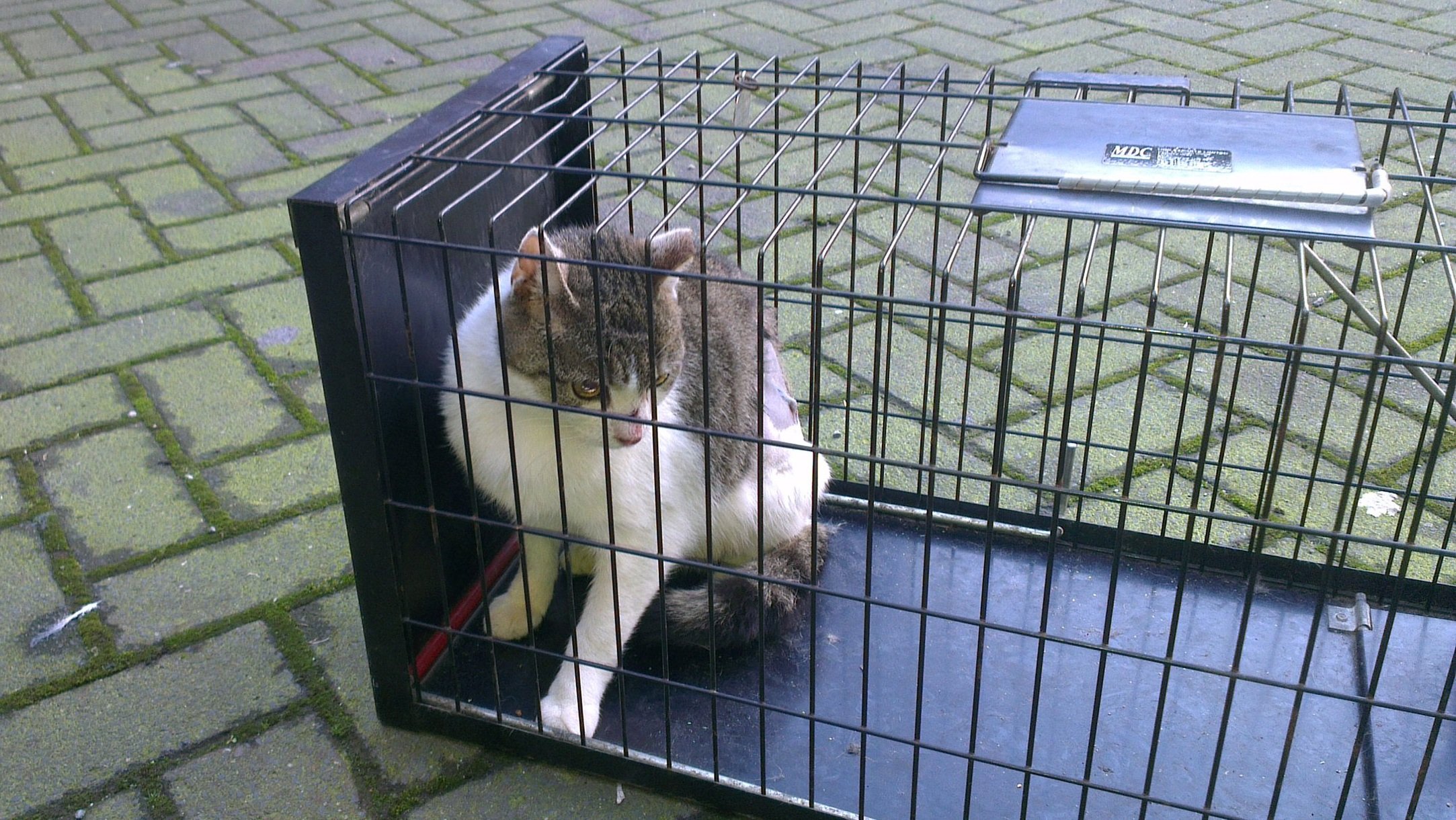Trapping Tips - Which trap is best
In our article “Have a go heroes” we reported how brave but foolhardy people tried to hand catch a feral cat, and we concluded that it is safer and more effective to use a cat trap. To reassure anxious cat-lovers we stress that our cat traps have nothing in common with snare traps which are reportedly used by hunters and poachers and designed to maim and kill; our traps are specialised cages which are baited with food and closed when the cat is eating inside.
The cat suffers no physical harm and only a minimum of stress for a very short time because we cover the trap as soon as possible with a large cloth; this works wonders with feral cats who feel instinctively safe in a small dark space and relax quite quickly, perhaps thinking they are in a hideout.
Which Trap is Best?
There are two types of safe traps and each has its uses:
Automatic traps
Manually operated traps
Automatic Traps - These will close shut with a clang as soon as the cat steps on a treadle located at the end, just in front of the food source. They are ideal when we are dealing with only one cat or in an indoor situation, such as when we are called to help when an ex-feral kitten had found the only open floorboard in the flat, under the kitchen sink, and disappeared. In order to attract the poor escapist, we placed the companion kitten safely inside a spacious cage, with food and litter for the night, right next to an automatic trap in the kitchen, hoping it would call its friend. The kitten came out when it was quiet and was safely caught.
If used in the open, the automatic trap has to be watched at all times because we might catch the wrong cat, including neighbours’ cats, and need to release them immediately. An adult feral cat may injure itself if it struggles in an automatic trap for any length of time. Also, a trapped cat in the open is at anybody’s mercy; well-meaning people might let it out because they fear for its life and others might harm it.
Manual Traps - which are string operated, are most effective when dealing with more than one cat or a colony, because we can trap selectively. Cats breed prolifically with up to four litters per year; therefore, all females have to be caught as quickly as possible and before they become trap-shy, having seen other cats trapped.
We place a big container with enough food for everybody in the trap, inviting the cats to eat their hearts out in their pecking order; watching each other go in and out of the trap is all good practice for them. When the cat which we intend to trap is inside, the string is swiftly pulled to close the trap in a split second. Should the cat not notice that it has been trapped, let it continue to eat and instead of causing panic amongst the other cats by running over to fetch it, or create a natural disturbance such as opening a door; this disperses the other cats, hopefully before the trapped cat stirs.
If we are clever, we can trap many cats in one afternoon, which would not be possible with the noisy automatic trap, because seeing and hearing the first cat being trapped would warn the others off. Then, certain cats may not be caught until more kittens have been born.
Trapping Tip - As long as females are in season, if the leading tomcat is neutered first more and more outside tomcats will join the colony. As a rule, the following order is a good plan of action, should all the cats congregate at the same time; vulnerable young kittens and their mothers first, then other mature females with priority to pregnant ones, adolescent cats next and last mature tomcats, which need to be castrated in order to have a more healthy and peaceful life.
© Cat Action Trust 1977

